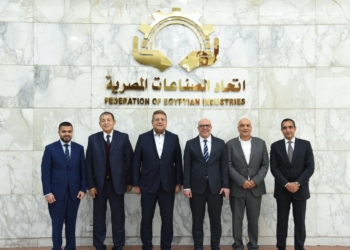Motivation and engagement are fundamental drivers of human behavior, especially in learning, work, and entertainment. Motivation fuels the internal desire to achieve goals, while engagement reflects the active participation in activities. Understanding how to enhance these factors is crucial for educators, employers, and creators of entertainment content. Among various strategies, the use of rewards stands out as a powerful tool to stimulate motivation and sustain engagement over time.
- Introduction: The Power of Rewards in Enhancing Motivation and Engagement
- The Psychology of Rewards: How They Influence Human Behavior
- Types of Rewards and Their Effects
- Modern Reward Systems in Digital Contexts
- Designing Effective Reward Strategies
- The Non-Obvious Aspects of Rewards and Engagement
- The Future of Rewards in Motivation and Engagement
- Conclusion: Unlocking Human Potential Through Thoughtful Reward Systems
1. Introduction: The Power of Rewards in Enhancing Motivation and Engagement
Motivation and engagement are pivotal in driving human activity, whether in learning environments, workplaces, or entertainment platforms. Motivation refers to the internal desire to pursue goals, while engagement describes the active participation that sustains effort over time. Both are essential for achieving meaningful results. Rewards have historically played a significant role in shaping behavior by providing external incentives that complement internal drives.
From the mechanical fruit machines of the early 20th century to today’s sophisticated digital incentive systems, the concept of rewarding behavior has evolved dramatically. Early slot machines used tangible rewards like coins to reinforce play, while modern digital platforms employ complex reward mechanics to motivate users. This historical perspective illustrates how the principle remains constant: rewards influence human behavior by providing tangible or intangible incentives.
2. The Psychology of Rewards: How They Influence Human Behavior
The foundation of reward-driven motivation is rooted in reinforcement theory, which posits that behaviors followed by rewarding stimuli are more likely to recur. For instance, a student receiving praise after completing a task is more inclined to repeat that behavior. This principle underpins many educational and workplace reward strategies.
A key distinction exists between intrinsic and extrinsic motivation. Intrinsic motivation arises from internal satisfaction—like the joy of learning or personal growth—while extrinsic motivation depends on external rewards such as praise, grades, or monetary incentives. An effective approach often balances both elements. For example, a language learner might initially be motivated by rewards like certificates but later develop internal satisfaction from communicating fluently.
Neurologically, rewards activate pleasure centers in the brain, particularly the nucleus accumbens, releasing dopamine. This neurochemical response reinforces the behavior, creating a positive feedback loop. Modern research in neuroscience confirms that the anticipation of rewards, not just the reward itself, significantly influences motivation.
3. Types of Rewards and Their Effects
Rewards can be categorized into material and non-material types, each with distinct impacts:
| Material Rewards | Examples & Effects |
|---|---|
| Money, gifts, trophies | Immediate gratification, tangible validation, often effective for short-term motivation |
| Digital currencies or points | Encourage ongoing participation, especially in gamified systems |
| Non-material Rewards | Examples & Effects |
| Recognition, praise, social validation | Fosters emotional connection, enhances loyalty, supports intrinsic motivation |
| Achievement badges, status symbols | Creates a sense of identity and community |
Additionally, the timing of rewards influences their effectiveness. Immediate rewards boost short-term motivation, while delayed rewards can foster sustained engagement, as seen in loyalty programs where points accumulate over time to unlock larger benefits. For instance, a loyalty card that offers instant discounts encourages quick engagement, whereas a long-term reward system builds ongoing loyalty.
Social rewards, such as recognition during team meetings or online validation through likes and comments, tap into our innate desire for social acceptance and affirmation. These rewards often have a profound emotional impact, reinforcing positive behavior and strengthening social bonds.
4. Modern Reward Systems in Digital Contexts
In the digital realm, gamification exemplifies how game elements like points, levels, badges, and leaderboards motivate users. These systems leverage reward mechanics to make activities more engaging. For example, platforms like Duolingo use streaks and badges to encourage daily language practice, significantly increasing user retention.
A compelling illustration of engaging reward mechanics is found in online gaming, such as bonanzasuperscatter. This platform employs cascade mechanics, where each successful spin can trigger further rewards, and maintains a high Return to Player (RTP) rate, fostering trust and ongoing participation. Such mechanics heighten anticipation and create a rewarding experience that keeps players motivated.
5. Designing Effective Reward Strategies
To maximize motivation, rewards should align with clear goals. Relevance and perceived value are crucial; a reward that resonates with the recipient sustains engagement. For example, personalized learning rewards—like customized certificates—can boost student motivation more than generic incentives.
Avoiding reward fatigue is essential. Over-reliance on frequent rewards can diminish their value, leading to decreased motivation. Implementing varied reward structures and periodically introducing new incentives help maintain interest.
Personalization enhances effectiveness. Tailoring rewards to individual preferences—such as offering different types of recognition or choices—recognizes diverse motivators. For instance, some learners may value public recognition, while others prefer private acknowledgment.
6. The Non-Obvious Aspects of Rewards and Engagement
Perceived fairness in reward distribution fosters trust and long-term motivation. If participants believe rewards are distributed unjustly, engagement declines. Transparent criteria and consistent application are key.
“Rewards are most effective when they create positive emotional associations and reinforce a sense of achievement, rather than dependency or entitlement.”
Emotional responses to rewards also influence loyalty. Positive reinforcement can generate feelings of pride and satisfaction, encouraging continued participation. Conversely, overjustification—relying solely on external rewards—may undermine intrinsic motivation, leading to dependency and reduced internal drive.
7. The Future of Rewards in Motivation and Engagement
Technological innovations like AI enable highly personalized reward systems that adapt to individual behaviors and preferences. For example, AI can analyze engagement patterns and suggest tailored incentives, increasing effectiveness.
Ethical considerations are vital. Responsible design ensures rewards motivate without exploiting vulnerabilities or fostering addiction. Balancing extrinsic incentives with fostering intrinsic motivation remains a key focus for future developments.
Integrating educational and entertainment rewards offers a holistic approach. Combining knowledge-based incentives with engaging game mechanics can enhance learning outcomes and entertainment experiences alike.
8. Conclusion: Unlocking Human Potential Through Thoughtful Reward Systems
In sum, rewards are a powerful tool to enhance motivation and engagement across various contexts. When thoughtfully designed—aligning with goals, ensuring fairness, and personalizing incentives—they can unlock human potential and foster sustained participation.
The practical applications are vast: educators can use recognition and achievement badges; companies can develop incentive programs; entertainment platforms can craft rewarding experiences that keep users coming back. By understanding the underlying mechanisms of reward systems, we can craft strategies that not only motivate but also build trust and loyalty.
As technology advances, the potential for personalized, ethical, and effective reward systems grows exponentially. Embracing these innovations responsibly will lead to more engaging, fulfilling experiences for all.
Ultimately, **”Unlocking human potential begins with understanding and applying the right rewards at the right time,”** a principle that remains as relevant today as in the earliest forms of incentivization.
الرابط المختصر: https://propertypluseg.com/?p=151327























